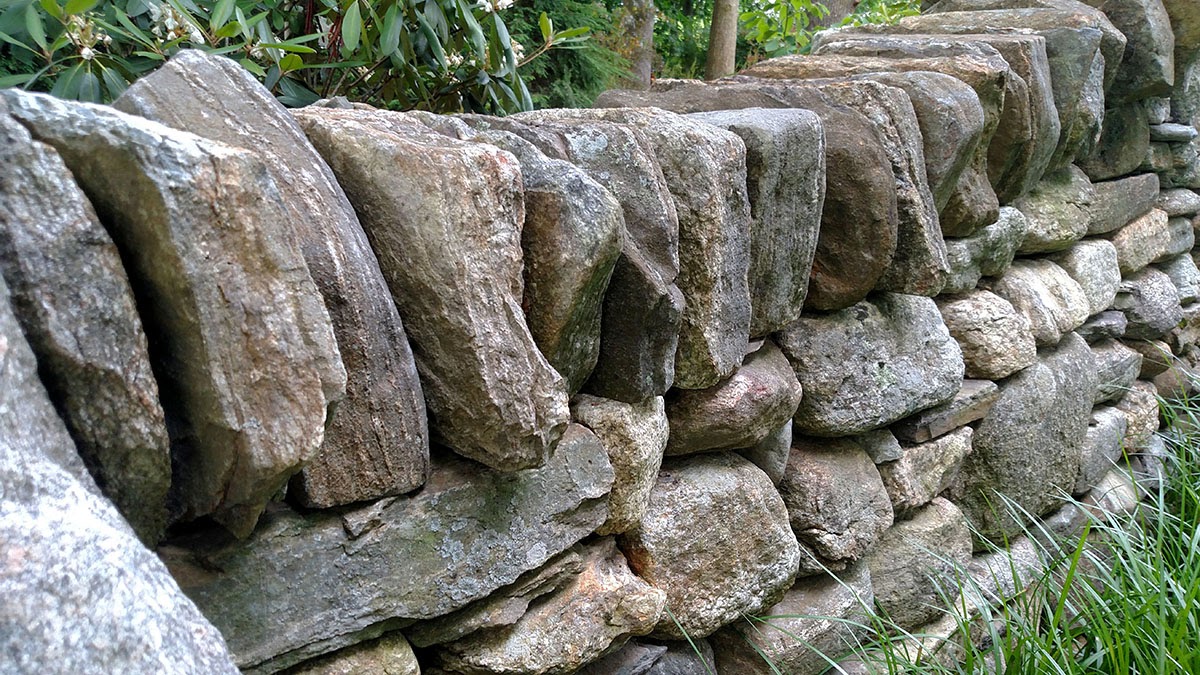Massachusetts Landscape Architect Takes Pride in Sustainable Design and Construction with New England’s Natural Stone

Crisscrossing the landscape long before the Revolutionary War, stone walls are as classic to New England as church steeples and lighthouses, with a legacy that continues to this day.
Hundreds of years after the nation gained its independence, walls crafted from native stone are still a traditional element in hardscape design not only in a nod to the region’s history but also as a more modern approach to sustainability.
Just ask Massachusetts-based landscape architect Neil Best, owner of Magma Design Group, a boutique landscape architecture and construction firm he co-owns with his wife Samantha. “I think as a New Englander, it’s really in our blood,” said the Rhode Island native who remembers his hometown “riddled” with fieldstone walls. “We have an amazing variety of natural stone at our fingertips.”
Granite, quartzite, and fieldstone are the most common choices of stone. Fieldstone is weathered and often has moss and lichen on the outside giving a newly constructed wall a weatheredappearance. Stone walls can be constructed from a variety of stone, from round fieldstone to thick, blocky ledgestone to ashlar cuts that are rectangular in appearance, the possibilities are astounding.

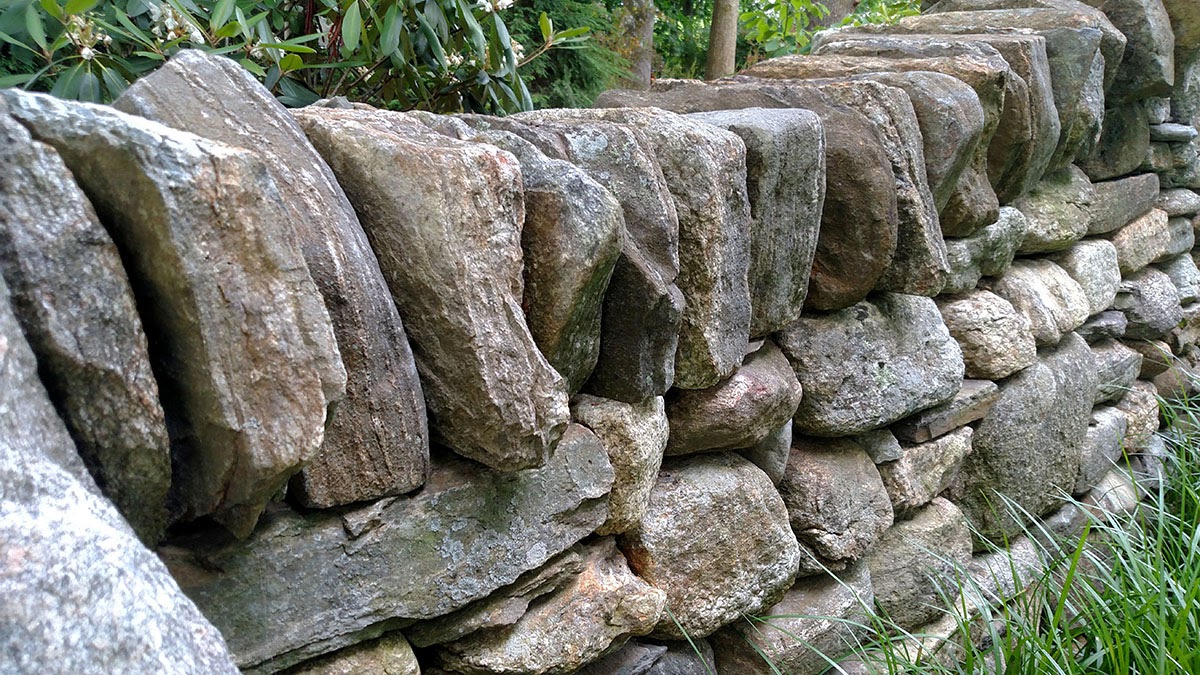
Dry laid moon gate stone wall. Project by Magma Design Group.
Read more about freestanding and retaining stone wall designs built with natural stone from Swenson Granite Works.
“Combine our native pool of wallstone, flagstone, and fabricated stone pavers with that of nearby New York and Pennsylvania and you’ll quickly realize that we are spoiled here as designers and builders,” said Best.
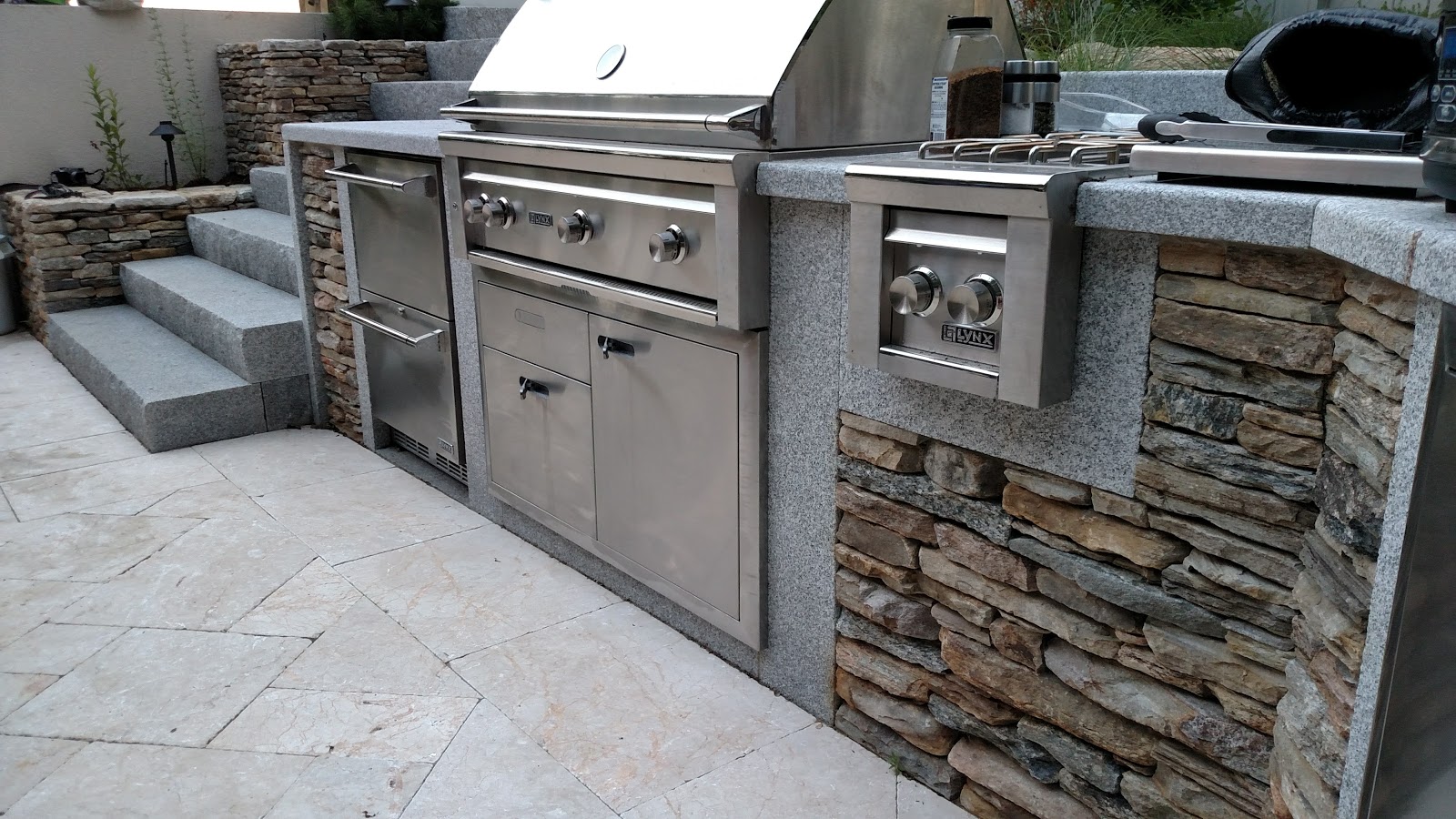
A fully functional outdoor kitchen with sandblasted Woodbury Gray granite countertops and locally-sourced fieldstone adds warmth and a natural aesthetic to this spacious Rhode Island backyard patio. Project by Magma Design Group.
He asks us to consider the environmental impact of quarrying and shipping stone from places like China and India vs. stone that’s quarried in our backyard, and to also wonder what environmental and safety shortcuts quarries in other countries are taking to keep costs so low. You may save a few cents per square foot but at what cost environmentally?
Best said, “It’s awesome to know that our dollars are put into these businesses that are American made, right here in New England, supporting the men and women who are working there.”
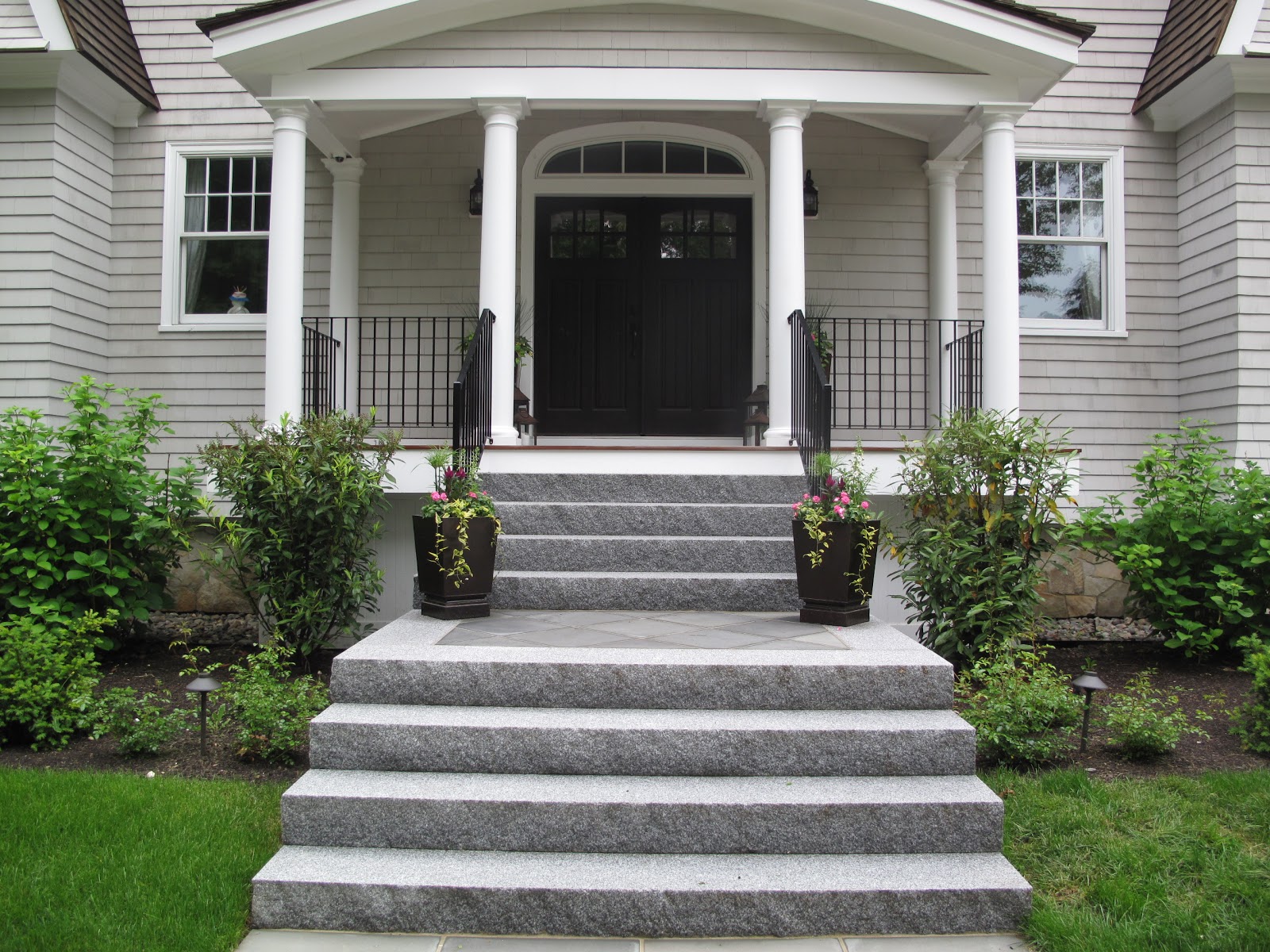
Woodbury Gray granite split face steps with bluestone on the landing. Project by Magma Design Group.
Natural stone is also superior to concrete products, as it won’t fade, is not susceptible to salt and improves with age over time. “Stone evolves with the landscape, displaying patinas and colors that evolve,” he said. “Erosion won’t expose aggregate, harsh sunlight won’t discolor stone and stone just lasts longer. Like forever.”
Magma Design Group often incorporates Swenson Granite Works products into its hardscape designs, said Best. He said the finish possibilities are “endless,” with everything from patios and polished countertops to sandblasted or thermal coping for poolside finishes.
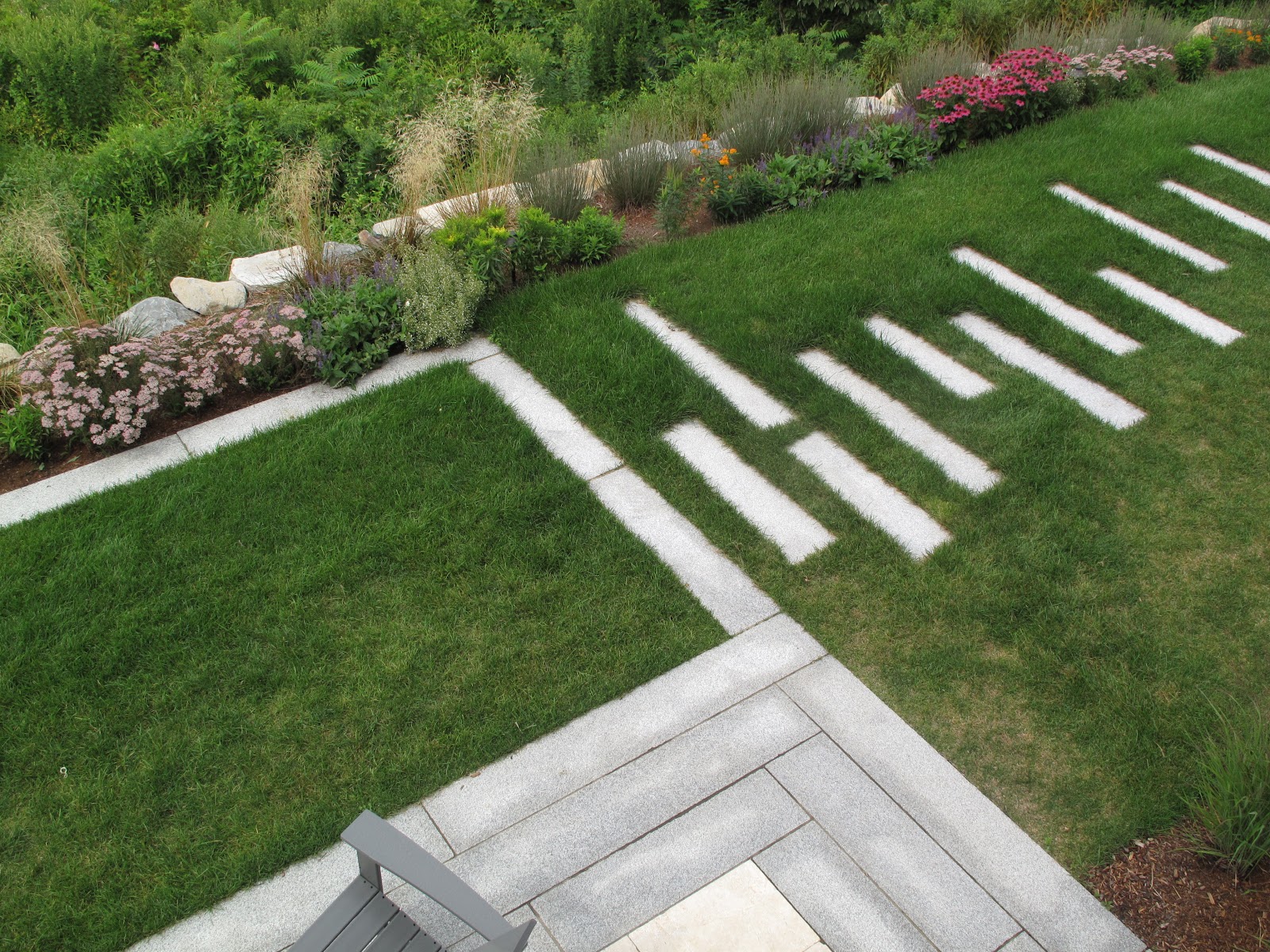
A minimalist patio design with Woodbury Gray granite pavers.

An outdoor kitchen with sandblasted Woodbury Gray granite countertops and locally-sourced fieldstone, and Woodbury Gray granite steps.

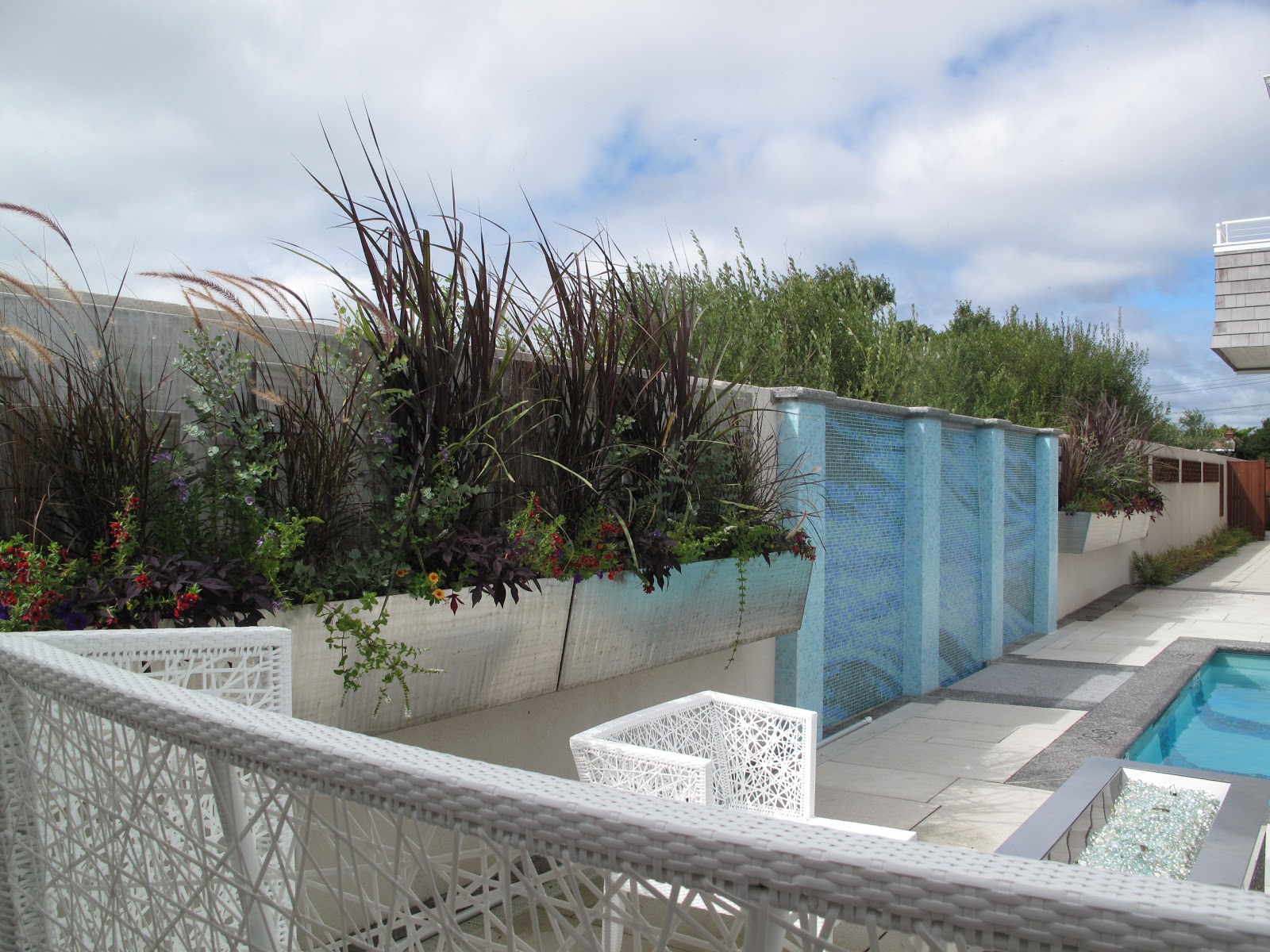
Caledonia granite was used as coping for the pool and water wall, as well as an edge around the entire patio.
“I think tying into the legacy of native stone is important,” said Best. “People have been building with it for hundreds of years here, and we are building environments in nature. Let’s try and make them as symbiotic as possible.”
Ready to transform your yard with an updated landscape? Discover how to use natural stone as part of your hardscape design at your nearest Swenson location.
Download the Price Guide to get details on all products. See prices on steps, posts, curbing, edging, coping, trim, veneer, pavers and ornamentals.
